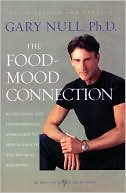“Dr. Mercola” - Save Hundreds if Not Thousands of Dollars on Food This Year…
 June 1, 2011
June 1, 2011 Dr. Mercola
June 1, 2011
A full 30 percent of all food produced in the world each year is wasted or lost -- about 1.3 billion tons of it.
Europeans and North Americans waste between 95 and 115 kilograms of food apiece each year. Those living in Sub-Saharan Africa, South Asia and Southeast Asia waste much, much less -- between 6 and 11 kilograms per person. All in all, the developed world wastes 10 times more food than the developing one.
According to CNN:
“Here’s another statistic: all the food that the world’s richest countries waste is about equal to all the food that sub-Saharan Africa produces. The numbers: 222 million tons and 230 million tons, respectively. Basically, the waste of the rich could feed much of the African continent.”
Shockingly, every year, one-third of the food produced in the world is lost or wasted, according to a new report commissioned by the Food and Agriculture Organization (FAO) of the United Nations. This massive number equates to 1.3 billion tons of food annually, an amount that's equal to, as CNN reported, giving every person in China a one-ton mass of food to throw away.
The report revealed some sobering statistics:
- People in rich countries waste nearly as much food each year (222 million tons) as is produced in sub-Saharan Africa (230 million tons).
- The amount of food lost or wasted each year equals more than half of the world's annual cereals crop.
- Fruits, vegetables, roots and tubers are the most wasted foods.
- Europeans and North Americans waste up to 115 kilograms (over 253 pounds) of food per capita per year, while those in Sub-Saharan Africa, South Asia and Southeast Asia waste only up to 11 kilograms (about 24 pounds) per person.
Food shortages are increasingly being projected and experienced around the globe, but it's apparent that the problem we're facing is not truly a shortage, but rather massive waste.
GM Crops are NOT the Solution to the "Food Crisis"
Food "shortages" are often used to justify the use of genetically modified organisms (GMOs), which their creators (primarily Monsanto) claim will save the world from environmental catastrophe and hunger by way of increased crop yields.
Well, contrary to the promises, GM crops are failing miserably all across the world.
The reality simply isn't living up to the hype of increased yields of healthy crops. But even if it were, the impending food crisis is not a matter of having enough food; there is plenty of food. The problem is how to use the food that is produced in a way that will feed the world. Unfortunately, as it stands food waste and loss is contributing to hunger around the globe.
Food Loss vs. Food Waste
Most of us that are fortunate enough to have enough food on our plates are guilty of food waste at one point or another. The celery that goes bad in your veggie crisper, the remainder of your sandwich at a restaurant, and the loaf of bread that goes moldy on your kitchen counter are all contributors to the massive epidemic of food waste.
Restaurants and supermarkets are also contributors.
One report by California Watch and the Annenberg School for Communication and Journalism at USC found that many retail grocery chains are more likely to throw away fruits, vegetables, roasts and hams rather than donate them to food pantries. Likewise with restaurants, which in California alone throw away tens of thousands of tons of edible food every year.
Food loss is another issue, and the FAO makes a clear distinction between the two.
The report notes:
"Food losses refer to the decrease in edible food mass throughout the part of the supply chain that specifically leads to edible food for human consumption. Food losses take place at production, postharvest and processing stages in the food supply chain.
Food losses occurring at the end of the food chain (retail and final consumption) are rather called "food waste", which relates to retailers' and consumers' behavior."
There is potential for food loss and waste at virtually every step of the food system. From vegetables left in farm fields to rot because they are discolored to produce lost due to spills or spoilage during processing and distribution, the amount of food lost or wasted could easily feed the world's hungry.
As the FAO report stated:
"Food is wasted throughout the FSC [food supply chains], from initial agricultural production down to final household consumption. In medium- and high-income countries food is to a great extent wasted, meaning that it is thrown away even if it is still suitable for human consumption.
Significant food loss and waste do, however, also occur early in the food supply chain. In low-income countries food is mainly lost during the early and middle stages of the food supply chain; much less food is wasted at the consumer level."
Wasted Food Equals Wasted Resources
According to a study published in the journal PloS One, Americans waste an estimated 1,400 calories of food per person, each and every day. These wasted calories represent not only 39 percent of the available U.S. food supply, but also account for approximately 300 million barrels of oil annually, with all of the environmental implications that go along with fossil fuel consumption.
The study found that food waste has increased by about 50 percent since 1974, and now accounts for more than one-quarter of total freshwater consumption. Wasted food equals wasted resources of all kinds, including not only water and fossil fuels, but also the hard-earned money you spend on groceries that never actually reach your plate.
In 2008, the New York Times featured a graphic that shows one U.S. family's share of food waste for one month, which is really eye opening. Using statistics from a 1995 federal study that found over 96 billion edible pounds of food were wasted by U.S. retailers, food service businesses and consumers that year, they figured that a family of four throws out about 122 pounds of food each month. This included:
|
10.4 pounds of meat and fish |
24 pounds of fresh fruit and vegetables |
10.5 pounds of processed fruit and vegetables |
|
22 pounds of milk |
15 pounds of sweeteners |
8.6 pounds of fats and oils |
|
12.8 pounds of other foods, such as eggs, nuts and beans |
18.5 pounds of grains |
|
Given that food waste has been increasing since that time, the amount thrown away today is likely far greater.
Of course, curbing food loss and waste is something that must take place on both global food system and individual (consumption and behavioral) levels. The FAO report noted:
"In developing countries the problem is chiefly one of inadequate harvest techniques, poor post-harvest management and logistics, lack of suitable infrastructure, processing and packaging, and lack of marketing information which would allow production to better match demand.
The advice is therefore to strengthen the food supply chain by assisting small farmers to link directly to buyers. The private and public sectors should also invest more in infrastructure, transportation and in processing and packaging.
In middle- and high-income countries food losses and waste stem largely from consumer behavior but also from lack of communication between different actors in the supply chain.
At retail level, large quantities of food are also wasted due to quality standards that over-emphasize appearance. Surveys show that consumers are willing to buy produce not meeting appearance standards as long as it is safe and tastes good. Customers thus have the power to influence quality standards and should do so, the report said.
Selling farm produce closer to consumers, without having to conform to supermarkets' quality standards, is another suggestion. This could be achieved through farmers' markets and farm shops.
Good use for food that would otherwise be thrown away should be found. Commercial and charity organizations could work with retailers to collect, and then sell or use products that have been disposed of but are still good in terms of safety, taste and nutritional value."
How to Avoid Food Waste in Your Home
The FAO report found that people in rich countries generally buy more food than they need, then end up throwing away the excess. They noted that "generally speaking, consumers fail to plan their food purchases properly … that means they often throw food away when 'best-before' dates expired."
I've long stated that planning your meals is important for a number of reasons, one of which is reducing the amount of food that will go to waste, since you'll only buy what you need each time you visit the store.
It will also go a long way to help you raise the nutritional content of your meals, as lack of planning combined with time constraints tend to be the number one reason for poor eating habits.
I recommend buying your food locally, preferably from a small organic farming operation you can visit and inspect for yourself. Not only will this guarantee you the freshest foods, giving you a few extra days of leeway before they spoil, this practice is also the most environmentally friendly, leaving the tiniest carbon footprint.
The solution to waste is NOT to load up on more processed or canned foods simply because you can store them until the end of time. Their extreme shelf life comes at a high price, as they are often loaded with chemical preservatives. Remember, the fresher your foods are to start with, the longer they'll be safe to eat, so choose small amounts of the freshest foods you can find and eat them as soon as possible.
Tips for Keeping Your Groceries Fresh
You may have seen my article from earlier this year titled 14 Ways to Save Money on Groceries. Among those tips are suggestions for keeping your groceries fresher, longer, and I suggest reviewing those tips now.
For instance, one of my all-time favorite tricks, which works for most produce, is to create a "vacuum pack" to help protect it from oxygen that will accelerate its decay. Leave the produce in the bag it came in from the grocery store, place it against your chest and use your arm to squeeze the excess air out of the bag.
Once the air is removed you can seal it with a twist tie and thus minimize exposure to oxygen. This simple technique can easily double or triple the normal shelf life of your vegetables by keeping oxygen away from them. If you have a refrigerator drawer full of veggies that are starting to wilt, another easy trick to use them up is to make vegetable juice.
Fresher is better, of course, but this is a simple way to make good use of old veggies.
Keep in mind, too, that surface imperfections -- like small "bruises" on fruits, a minute speck of mold on a piece of cheese, or a bit of wilting -- are typically not going to make you sick.
They can be cut off and the food will still be fine to eat.
Taking steps in your own life to eliminate food waste makes you part of the solution and not the problem. And, if you act on the suggestions above, you'll also probably save yourself some money on food that would otherwise be wasted.
 Email Article |
Email Article | 



